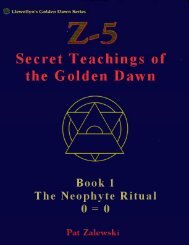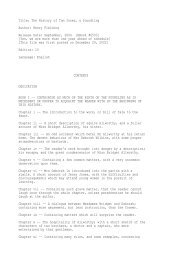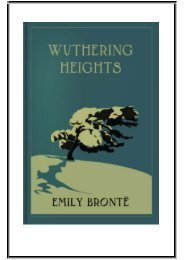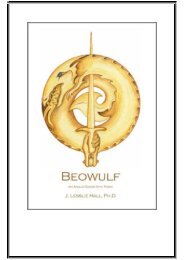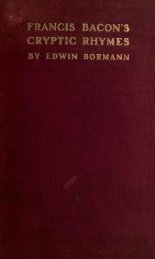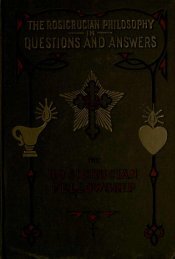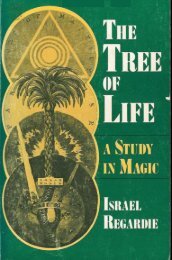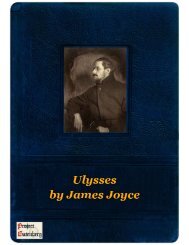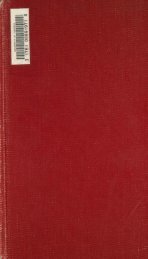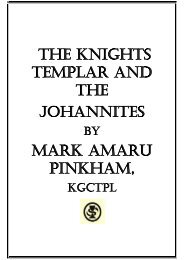Click to download PDF version: 3.87MB - Global Grey
Click to download PDF version: 3.87MB - Global Grey
Click to download PDF version: 3.87MB - Global Grey
You also want an ePaper? Increase the reach of your titles
YUMPU automatically turns print PDFs into web optimized ePapers that Google loves.
151 At the Back of the Black Man's Mind By R. E. Dennett<br />
The front wall ran in a straight line along the Sapoba <strong>to</strong> Gilli Gilli road, almost Northwest<br />
and South-east for about 500 yards, and it was called OBOLOBA. The quarter<br />
behind it was called IDUMIWEBO, part of which is situated near <strong>to</strong> the OBA. The second<br />
wall was called OZAMOKO, while the quarter behind it was that of the Eunuchs, called<br />
URUKPOTA. The third wall was called UGOHE and the quarter behind it UGWOZOLA.<br />
Here the late OBA had a tin house built upon iron pillars, and it was in this quarter<br />
where people wishing <strong>to</strong> see him had <strong>to</strong> wait. There is a deep pit here and another just<br />
behind the present cemetery these pits are called IRIDIAWÃ1.<br />
I never saw the palace, and cannot therefore describe it, but while wandering about its<br />
ruins I have come across holes in the ground some 15 feet deep, which were in some of<br />
the divisions of the palace, and were used by the late OBA as the burial place of those<br />
visi<strong>to</strong>rs whom he did not wish <strong>to</strong> see again.<br />
The people still dig amongst the ruins of the palace for the bronzes the OBA and his<br />
followers valued so much. Mr. Erdmann, a well known German trader, on his last visit <strong>to</strong><br />
Benin City informed me that he had seen the palace just after its roof had been burnt off<br />
and had taken many pho<strong>to</strong>graphs of it. He said that the bronzes were ranged along the<br />
walls and served as his<strong>to</strong>rical symbols, reminding the his<strong>to</strong>rian of the chief events of the<br />
past his<strong>to</strong>ry of the BINI people. Unfortunately this much-respected trader died on his<br />
way home in the year, 1904.<br />
Inside the first or second wall was the tree under which people were sacrificed <strong>to</strong> the<br />
Rain power, this ceremony was called AIYAWOMANAMI.<br />
People were sacrificed <strong>to</strong> the Sun76 power under the UBOGWE tree which once s<strong>to</strong>od<br />
just in front of the first wall outside the Compound. Where murderers are now hung<br />
under the OKHA and ULOHE trees near <strong>to</strong> IMARAN's quarter the ceremonies connected<br />
with the new Yam Juju were commenced.<br />
And in the ODERIE where there is now a fowl house, and under the IKHIMI tree cows<br />
were sacrificed.<br />
What we know now as the Sapeli Road was called UBOKA, while just outside the<br />
Residency on the Sapoba Road there was a place and a tree <strong>to</strong> which people used <strong>to</strong> be<br />
tied called the OGYUWO. Along one side of the IKPOBA road there are the ruins of a line<br />
of blacksmiths' shops, and blacksmiths are still found in different parts of the city<br />
working in iron and brass. The present productions in brass are rough and crude, but<br />
there are some artists who sculpture very well in clay, and so ornament the pillars in<br />
some of the houses of the Benin City Chiefs. Carvers in wood also exist, but the ivory<br />
carvers cannot be compared <strong>to</strong> those of Luango south of the Equa<strong>to</strong>r.<br />
Upon showing the pho<strong>to</strong>s of bronzes and ivory in the "Antiquities of Benin" <strong>to</strong> certain<br />
chiefs, their surprise and satisfaction was very great, and they were glad <strong>to</strong> think that<br />
76 This was called AIYAWOMANUKBO<br />
www.globalgrey.co.uk



